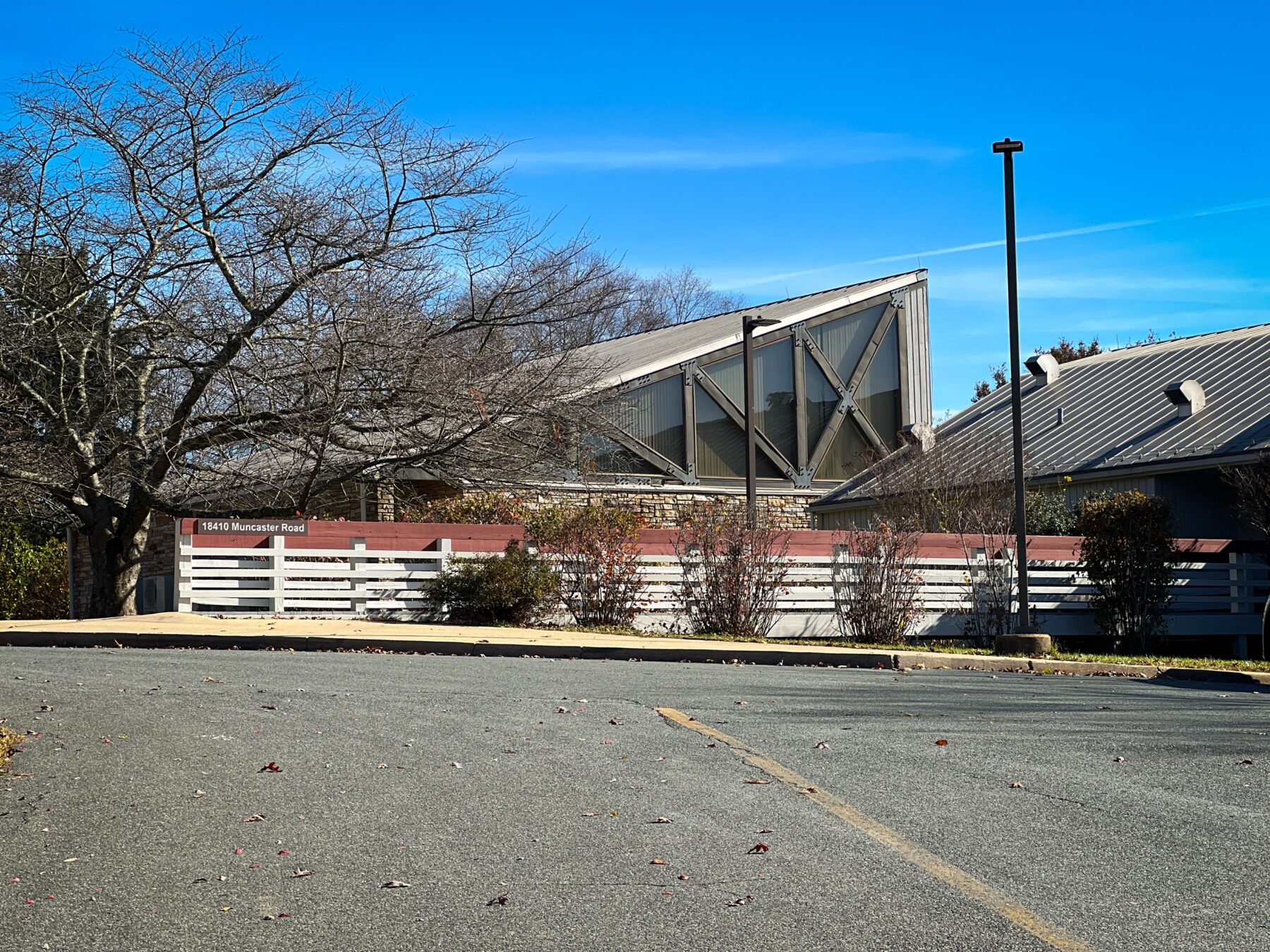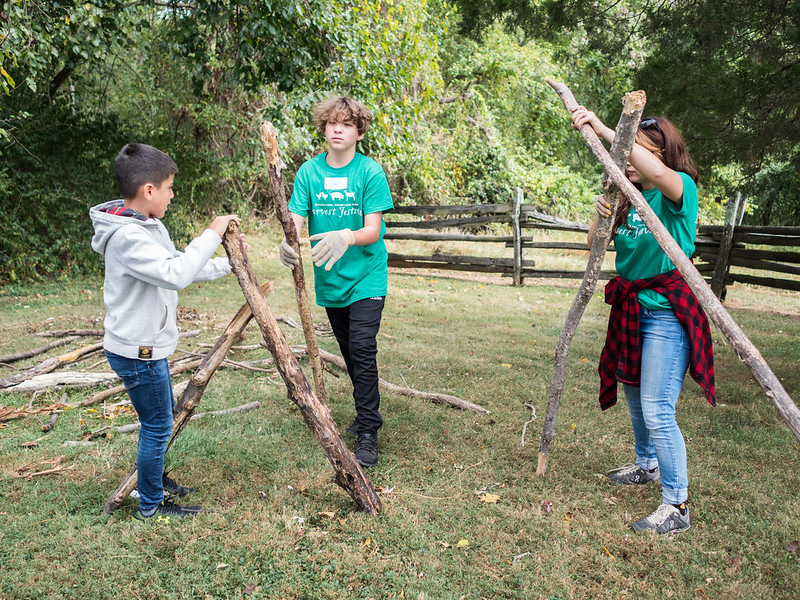Getting Here
The entrance to the farm park is located on Muncaster Road, marked by a brown wooden sign. To reach the historic buildings, turn right onto the gravel road at the first junction. Parking is available in the grass field in front of the farmhouse, accessible through an opening in the wooden fence on the right. Please avoid parking near the historic buildings, as it can disrupt the visitor experience.
From Washington, DC, start by heading north on the GW Parkway. Take the exit for I-495 N toward Silver Spring. Merge onto I-495 N and stay on it for several miles. Then take I-270 N toward Rockville. Continue on I-270 N and take Exit 10-9 for I-370 E. Follow I-370 E and take Exit 3A for Shady Grove Rd. Continue on Shady Grove Rd, then turn right onto MD-115 E/Muncaster Mill Rd. Turn left onto Muncaster Rd and continue for about 1.3 miles. Lastly, turn left at the Farm Park’s entrance.
From Baltimore, take I-95 S toward Washington, DC. Merge onto I-495 W toward Silver Spring and stay on the beltway. Take the exit for I-270 N toward Rockville. Continue on I-270 N and take Exit 10-9 for I-370 E. Follow I-370 E and take Exit 3A for Shady Grove Rd. Continue on Shady Grove Rd, then turn right onto MD-115 E/Muncaster Mill Rd. Turn left onto Muncaster Rd and continue for about 1.3 miles. Lastly, turn left at the Farm Park’s entrance.
From Frederick, take I-270 S toward Washington, DC. Stay on I-270 S and take Exit 10 for Shady Grove Rd. Continue on Shady Grove Rd and then turn right onto MD-115 E/Muncaster Mill Rd. Turn left onto Muncaster Rd and continue for about 1.3 miles. Lastly, turn left at the Farm Park’s entrance.

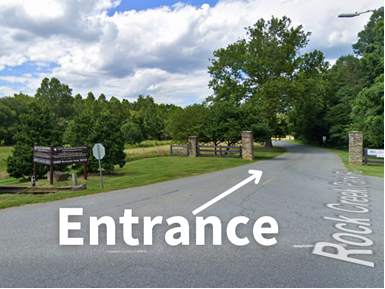

Parking: Visitor parking is located in the grass field on the right in front of the farmhouse. The field entrance is an opening in the wood fence and is marked with a sign.
Please do not park on the gravel as it is for authorized vehicles only.
Park Policies
Pets Policy: Dogs are welcomed here at the Farm Park! Our staff loves to see park visitors walking around with their furry friends. For the safety of our farm animals and other parks guests, dogs are required to be on a leash at all times. Thank you for your cooperation.
Community Gatherings: The park space at the Agricultural History Farm Park is a great place for community gatherings and small group activities! In an effort to avoid interferences between these activities and those being offered by the Farm Park, a permit is required for any group of 10 or more people who wish to use the park space for a planned gathering of any kind. This permit is FREE for groups with less than 50 people.To obtain a permit, please contact our office at AHFPprograms@montgomeryparks.org. Please note that permit requests must be made at least 2 weeks in advance and are considered at the digression of the Historic Site Manager.
Photo Permits: The Agricultural History Farm Park offers a stunning backdrop for photography! A paid photo permit is required for posed photography sessions, available seven days a week from Sunrise to Sunset. For more information on pricing and how to request a photography session, please visit our Photography Permits page.
Programs and Special Events
Homeschool History – Twice a month on Thursdays, the Farm Park offers a 2-hour educational program designed for homeschoolers. The lessons cover a variety of topics related to daily life on a farm from the 18th to 20th centuries, including activities such as laundry, cooking, planting, harvesting, husbandry, games, holidays, and more. These hands-on, interactive lessons offer an engaging and educational experience for students of all ages. This program begins in March 2025. Registration opens on February 18.
Little Farmer Storytime – This program is designed for young children, ages 5 and under, and their parents, grandparents, guardians, or loved ones. Held twice a month—on the first Friday and last Saturday mornings—this cozy, welcoming experience invites children to sit back and relax while enjoying a farm-themed story read aloud. This program begins in March 2025. Registration opens on February 18.
Fun on the Farm – Join us for Fun on the Farm, a weekly summer program where kids can dive into farm-themed arts and crafts activities like painting, clay sculpting, and basket weaving. Each week, they’ll explore a different topic, learn about its history and significance, and create their very own farm-inspired masterpieces. It’s a perfect opportunity for kids to get out of the house, unplug, and have fun while getting hands-on with creative projects and learning about the exciting world of agriculture!
Harvest Festival – First Saturday in October, held rain or shine. There are numerous vendors, living history demonstrations, crafts, activities and a whole lot more fun for the whole family.
Ag. Education Tailgate Day – Save the Date – May 15, 2026!
Mark your calendars for an exciting day of hands-on learning, discovery and fun! Students, families and educators are invited to explore the world of agriculture through interactive exhibits, mobile learning centers, and engaging stations led by agricultural experts, government agencies, and local organizations from the field. Learn about the transformation from traditional farming to modern agricultural innovations, environmental science, local history and career opportunities – there’s something for every age and interest! Come experience the energy and curiosity that make this event unforgettable and be part of a day where learning takes root and curiosity grows!
Seasonal Steps – Every Wednesday in select months throughout the year, enjoy a peaceful, guided stroll through the Farm Park’s scenic trails, immersing yourself in the farm’s beauty at a leisurely pace. This free program provides a mindful, reflective outdoor experience, offering the perfect opportunity to connect with nature. Registration for this program is open now.
Please note that program registration is seasonal. This means you can only sign up for programs that are happening now or coming up soon. To register, you’ll need to create an Active Montgomery account.
For more information and registration for these events and more, please visit ActiveMONTGOMERY
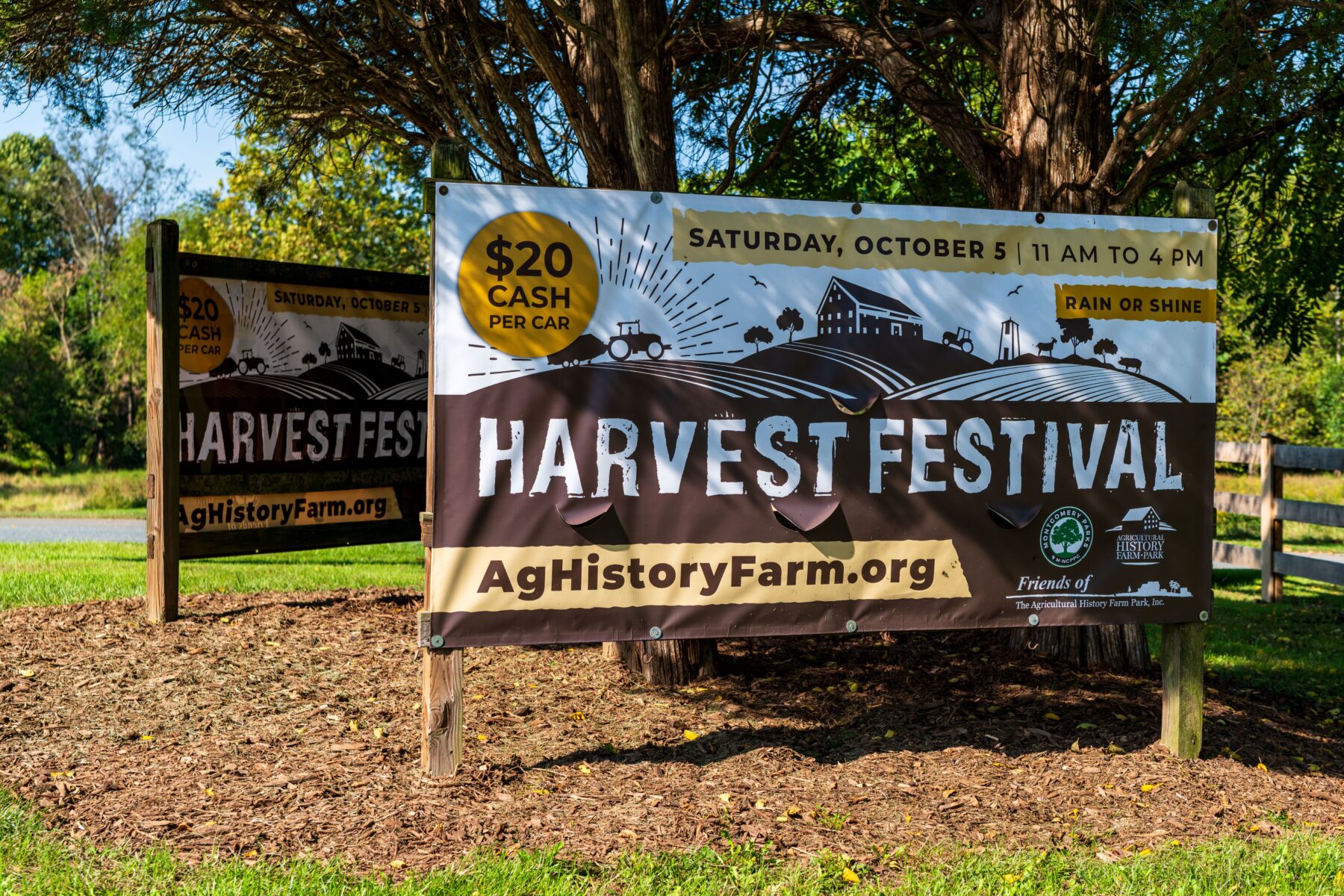
The Farm Park has a wonderful volunteer support group, Friends of the Farm Park, which puts on events at the Agricultural History Farm Park which include:
- Gas & Steam Engine Show – held every April
- Montgomery County Heritage Days -held every June
- Bluegrass on the Farm – held every September
- Blacksmiths & Friends Traditional Arts Show – held every November
To learn more about their events or the organization visit Friends of the Farm Park
The Historic Buildings and Sights
The Bank Barn: The farm park’s original bank barn, built in 1895, is a historic example of the barns commonly found in Montgomery County at the turn of the century. It was used by farmers to milk dairy cattle, house draft animals in the basement, store hay, and thresh grain, making it a vital asset on the farm. The barn is open to visitors during special events and specific programs, offering a unique opportunity to explore this piece of history.
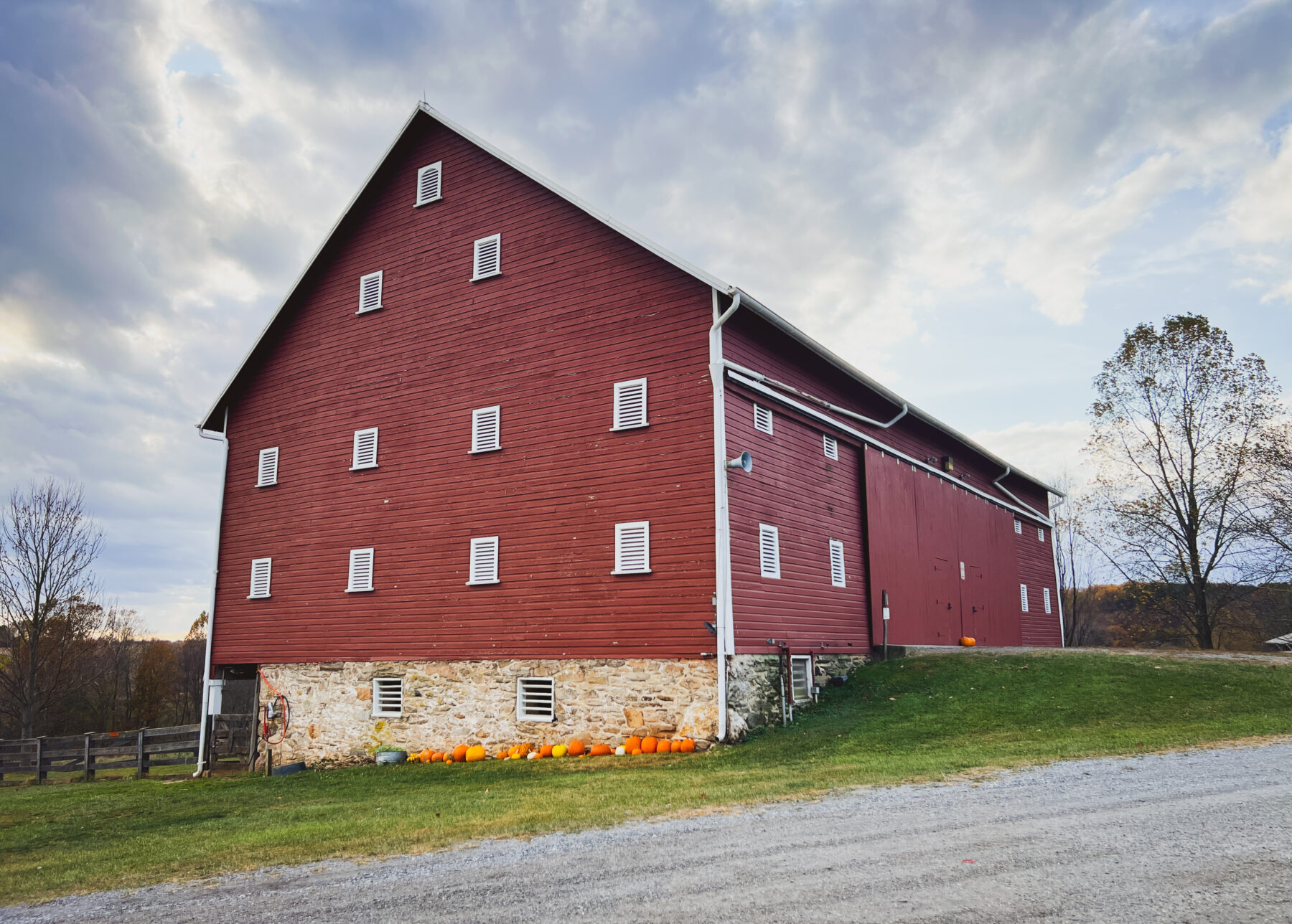
Magruder – Bussard Farmstead: The Magruder-Bussard farmhouse offers a captivating glimpse into early 20th-century farm life. Serving as the heart of the farm, the house was central to family life, where children were born, laundry was washed, meals were prepared, and many other daily activities took place. Several additions to the house reflect its growth as the family expanded. While the farmhouse is currently undergoing renovations, the kitchen is open for tours during special events, providing visitors with a closer look at this important part of farm history.
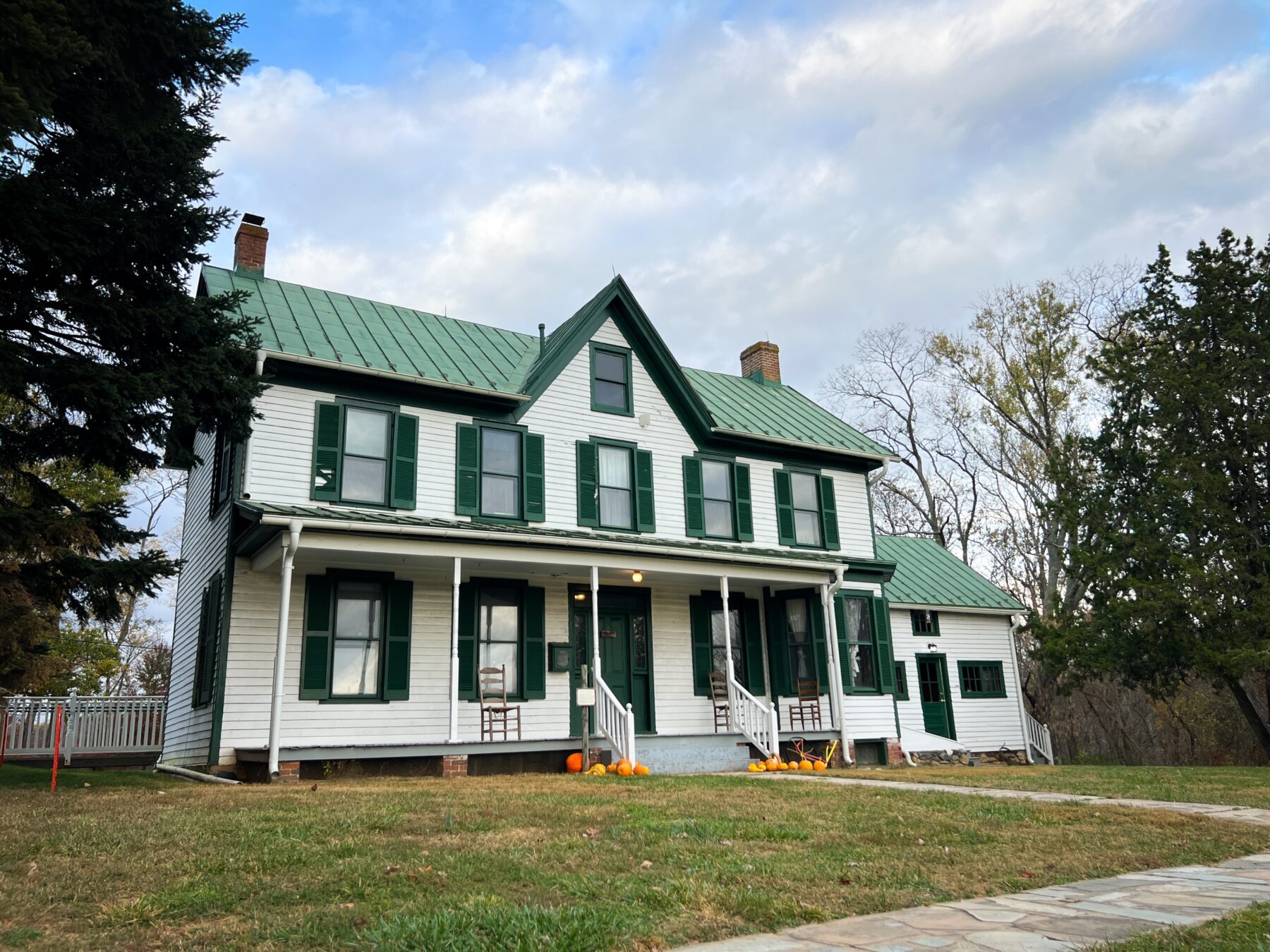
Historic Outbuildings: Visitors can explore a variety of historic outbuildings, each offering insight into the workings of a turn-of-the-century farm. These include a granary, maintenance shed, equipment shed, water tank house, corn crib, woodshed, smokehouse, chicken coop, broody house, carriage shed, hay barracks, and the iconic privy. Each structure played a vital role in the daily operations of the farm, and together, they help bring the past to life, showcasing the essential tasks and traditions that supported farm life at the time.
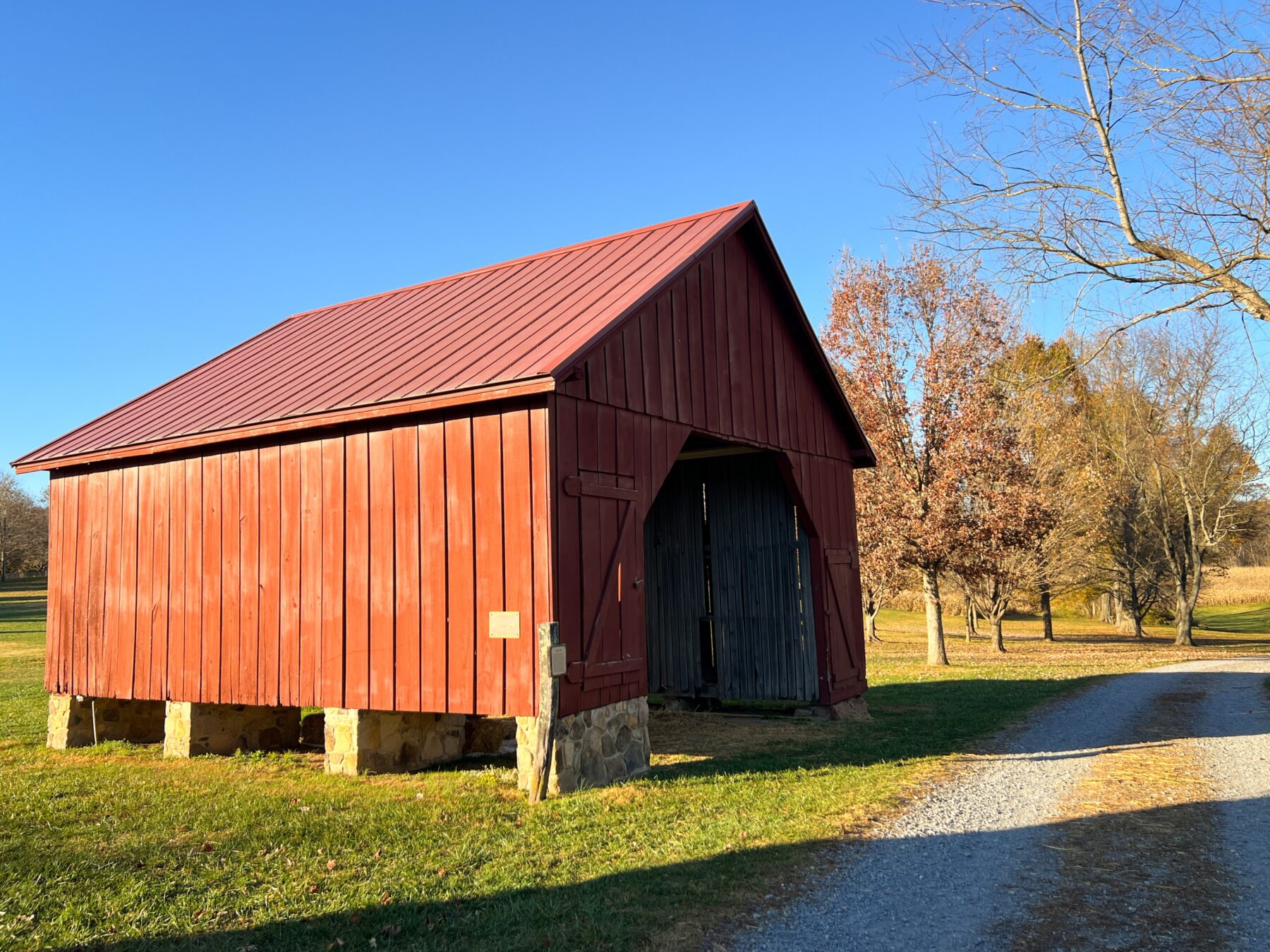
Newmantown: Although the sign at the entrance reads “Newman Building,” no buildings from the original settlement remain on the property today. The Park encompasses a 39-acre section on the western edge of the farm, which was once home to a kinship-based African American community established in 1879. Albert and Mary Newman acquired part of the “Cook’s Inheritance,” where they built a house and several outbuildings. Over the years, two of their sons also constructed homes on the land—Morton in 1885 and Fenton in 1914. Sadly, none of the original houses or structures are still standing.

The Orchard: Orchards were typical of many turn-of-the-century farms. Fruits were picked, canned and consumed throughout the year by the farm family, and the fruit was sold at markets for additional income. In 2006, 24 apple trees were planted at the farm, and five different species of apples now grow successfully.
The UMDE Office Building
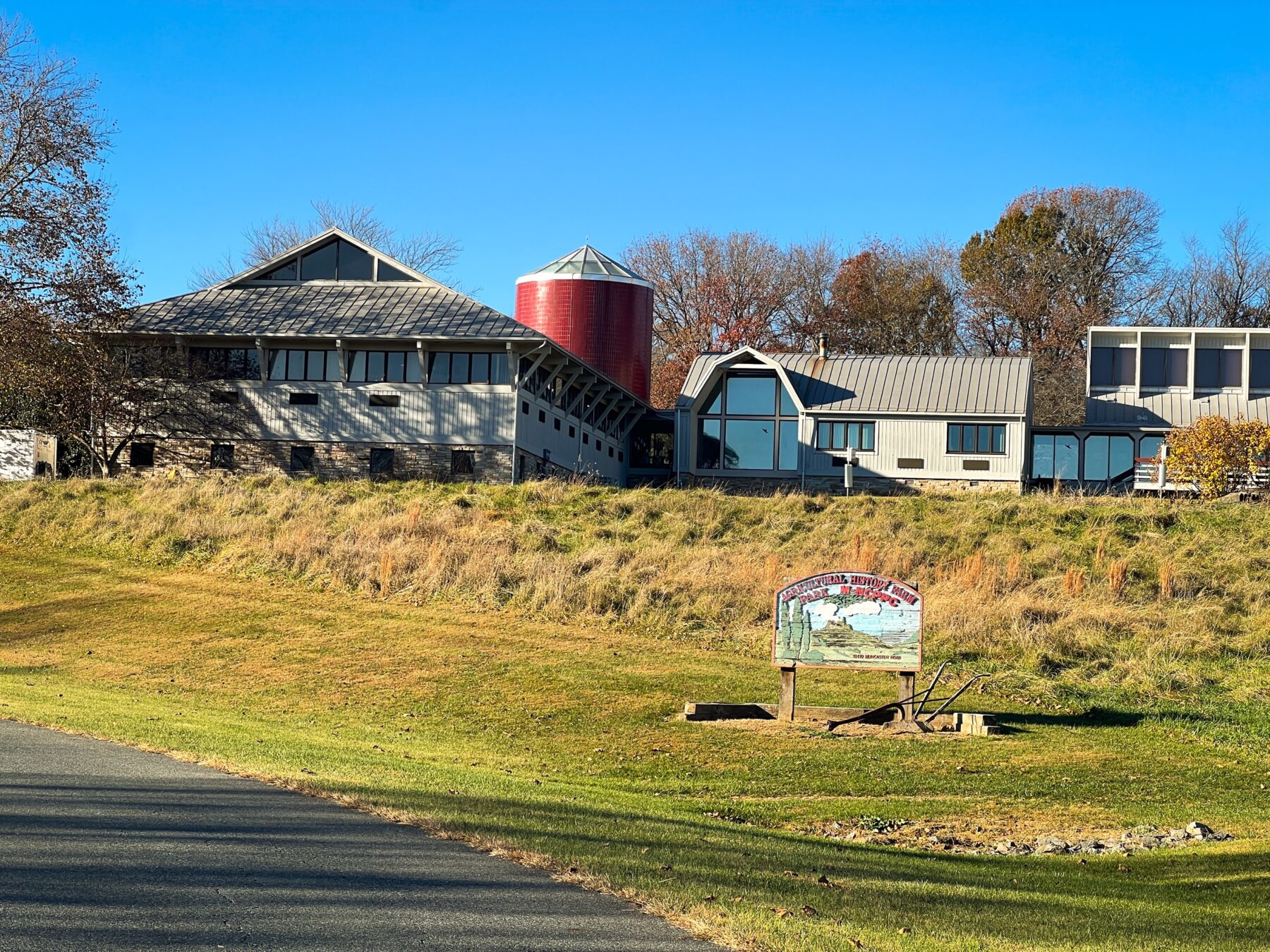
This building is home to the University of Maryland Extension, the Office of Agriculture, and the Montgomery Soil Conservation District. The UMDE Master Gardeners – Demonstration Garden and the National Capital Dahlia Society Garden are accessible from here.
To reach the UMDE office building, follow the paved park entrance road all the way to the parking lots at the end.
